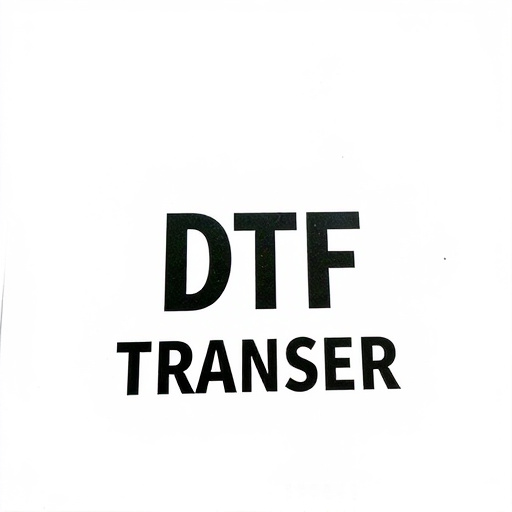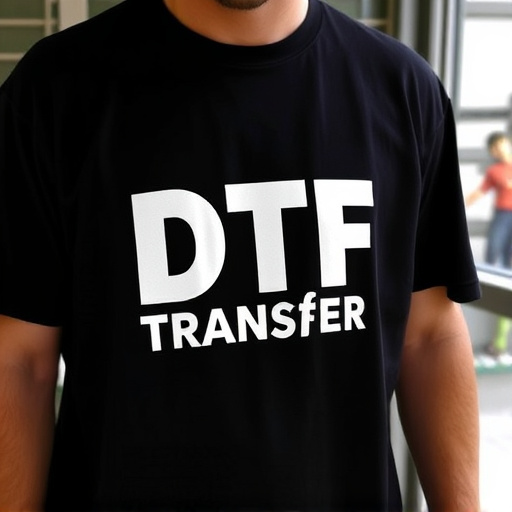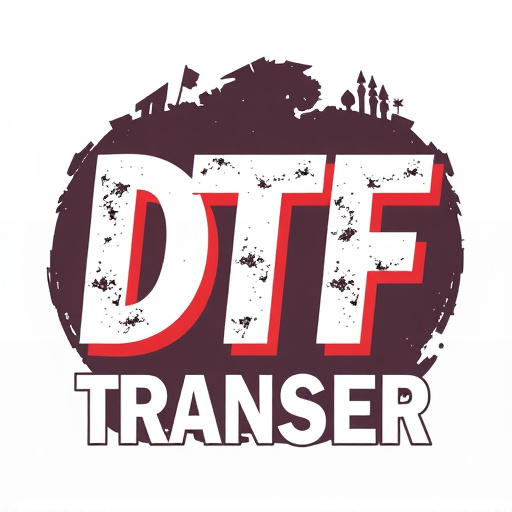Direct to Fabric (DTF) transfer and printing is a cutting-edge technique that streamlines custom fabric printing. By digitizing designs and eliminating traditional machinery, DTF offers an efficient, cost-effective solution for bulk orders. The process involves digitally printing onto special paper, heating to bond the ink with fabric, and accommodating intricate designs on various fabric types for clothing, accessories, and home textiles. DTF consolidates steps, providing fast turnaround times, vibrant colors, durability, and superior quality, revolutionizing production periods and enabling swift delivery of custom products. Skilled designers conceptualize client visions into detailed digital patterns, ensuring color accuracy and precise registration through a rigorous review process. This meticulous approach guarantees exceptional visual appeal in final DTF fabric applications.
“Unveiling the Behind-the-Scenes of DTF Transfer: Optimizing Production Periods for Efficient Order Completion. This article delves into the intricate process of Direct to Fabric (DTF) transfer technology, exploring each stage from design conception to final packaging. We break down the pre-production phase, including design creation and proofing, material preparation, and cutting. Furthermore, we examine the DTF printing process, heat pressing, quality control, and order fulfillment, providing insights into minimizing lead times and ensuring high-quality DTF prints.”
- Understanding DTF Transfer and Printing Process
- – Brief explanation of Direct to Fabric (DTF) transfer technology
- – Key steps involved in DTF printing
- Pre-Production Phase: Design and Proofing
- – Time required for design creation and customer approval
- – Importance of high-quality digital files and color proofs
Understanding DTF Transfer and Printing Process

The DTF (Direct to Fabric) transfer and printing process is a cutting-edge technique revolutionizing the way custom prints are created on various fabrics. This direct printing method eliminates the need for traditional screen printing or heat press machines, making it an efficient and cost-effective solution for bulk orders. The process involves several precise steps: first, the desired design is digitally printed onto a special transfer paper using high-quality inks. This transfer paper acts as a temporary carrier for the print. Once the ink is dry, it is heated to around 180°F (82°C), causing the ink to bond permanently with the fabric during a press or heat treatment.
DTF printing offers unparalleled versatility, allowing for intricate designs and a wide range of fabric types to be printed. It’s particularly popular for creating custom clothing, accessories, and home textiles. The process ensures fast turnaround times since it consolidates the steps involved in traditional printing methods. Moreover, DTF transfer prints provide vibrant colors and excellent durability, making them suitable for both indoor and outdoor use. This efficient and modern technique is transforming the production period needed to complete transfer orders, enabling businesses to deliver custom products swiftly and with superior quality.
– Brief explanation of Direct to Fabric (DTF) transfer technology

Direct to Fabric (DTF) transfer technology has revolutionized the way we print on textiles. Unlike traditional methods that require multiple steps and chemical treatments, DTF allows for direct printing onto fabric using heat-transfer paper. This modern approach streamlines the production process, enabling efficient creation of custom designs on a variety of fabrics.
With DTF, prints are achieved through a simple three-step process: design creation, printing of the design onto heat-transfer paper, and then application of heat to transfer the image onto the fabric. This technology offers unparalleled precision and vibrancy in prints, making it a popular choice for businesses and individuals looking to create unique, high-quality DTF prints on demand.
– Key steps involved in DTF printing

The Direct to Fabric (DTF) printing process is a key step in producing high-quality transfer orders efficiently. It involves several precise actions that bring designs to life on fabric. First, the artwork or design is created using specialized software, ensuring it meets the required specifications for printing. This digital file is then prepared for printing by setting up the correct color profiles and resolutions. The actual DTF process starts with the application of a water-based ink onto the fabric through a precision print head. The ink adheres to the fabric, creating the desired design or text.
After printing, the ink must dry quickly to prevent smudging or bleeding. This step is crucial to ensure the final product’s longevity and vibrancy. Once dry, a clear coating is applied over the printed area, protecting the ink from fading or damage and adding a glossy finish. The fabric with the DTF transfer is then ready for cutting, usually using a digital cutter, to separate the individual designs or letters. This meticulous process ensures that each DTF print is accurate, vibrant, and prepared for further application onto various garments or materials.
Pre-Production Phase: Design and Proofing

The pre-production phase is a critical step in the journey to create high-quality DTF (Direct to Fabric) transfers and prints. This stage involves meticulous design work and proofing processes, ensuring that the final product meets the desired specifications. Designers play a pivotal role here, translating client visions into detailed digital patterns suitable for DTF printing techniques. The process begins with conceptualization, where ideas are transformed into visual layouts using specialized software. Once approved, designs are then optimized for fabric application, considering factors like color accuracy, resolution, and scale.
Proofing is an essential part of this phase, allowing for the detection and correction of any design flaws or inconsistencies. Printers use sample fabrics to test the DTF inks, ensuring vibrant colors and precise registration. This iterative process involves printing, inspecting, and making adjustments until the design is perfect. By thoroughly vetting the designs and prints during this period, manufacturers can guarantee that each transfer order will result in exceptional, visually appealing DTF fabric applications.
– Time required for design creation and customer approval

The production period for transfer orders begins with a crucial step: design creation. This phase demands dedicated time and effort to ensure each DTF (Direct-To-Fabric) transfer design is visually appealing, technically sound, and aligns perfectly with customer expectations. Skilled designers conceptualize and draft the artwork, taking into account factors like color accuracy, image resolution, and overall layout, all while adhering to client specifications. Once the initial designs are ready, they undergo a rigorous review process, necessitating back-and-forth communication between the design team and the customer for approval. This iterative approach ensures that the final DTF transfer meets the client’s exacting standards, be it for promotional items, apparel, or any other application of DTF printing technology.
Following design approval, the production phase kicks into gear. This includes setting up the DTF printer, preparing the fabric substrate, and precisely aligning the design for printing. The actual DTF printing process itself is relatively quick, but it’s a finicky procedure that requires meticulous attention to detail to achieve top-quality results. Once printed, each transfer must pass quality control checks, ensuring consistent excellence across every DTF print. This careful consideration of timing ensures that orders are fulfilled efficiently, minimizing delays and maximizing customer satisfaction.
– Importance of high-quality digital files and color proofs

High-quality digital files and color proofs are paramount in the production process for DTF (Direct to Fabric) transfer orders. Accurate digital files ensure that designs are precisely replicated on fabric, resulting in vibrant and detailed prints. Color proofs serve as a critical quality control measure, allowing printers to verify colors, contrast, and overall aesthetic before proceeding with mass production. This meticulous attention to detail is what sets apart exceptional DTF prints from average ones, ensuring clients receive products that meet their high standards.
By utilizing advanced digital technology and precise color matching techniques, DTF printing offers a level of versatility and customization that traditional printing methods struggle to match. It’s essential for printers to maintain a consistent standard of excellence throughout the production process. This involves not only relying on top-tier equipment but also demanding high-resolution, well-formatted digital files from clients. Such rigor guarantees that each DTF transfer order meets the stringent requirements of modern textile printing and results in outstanding final products.














